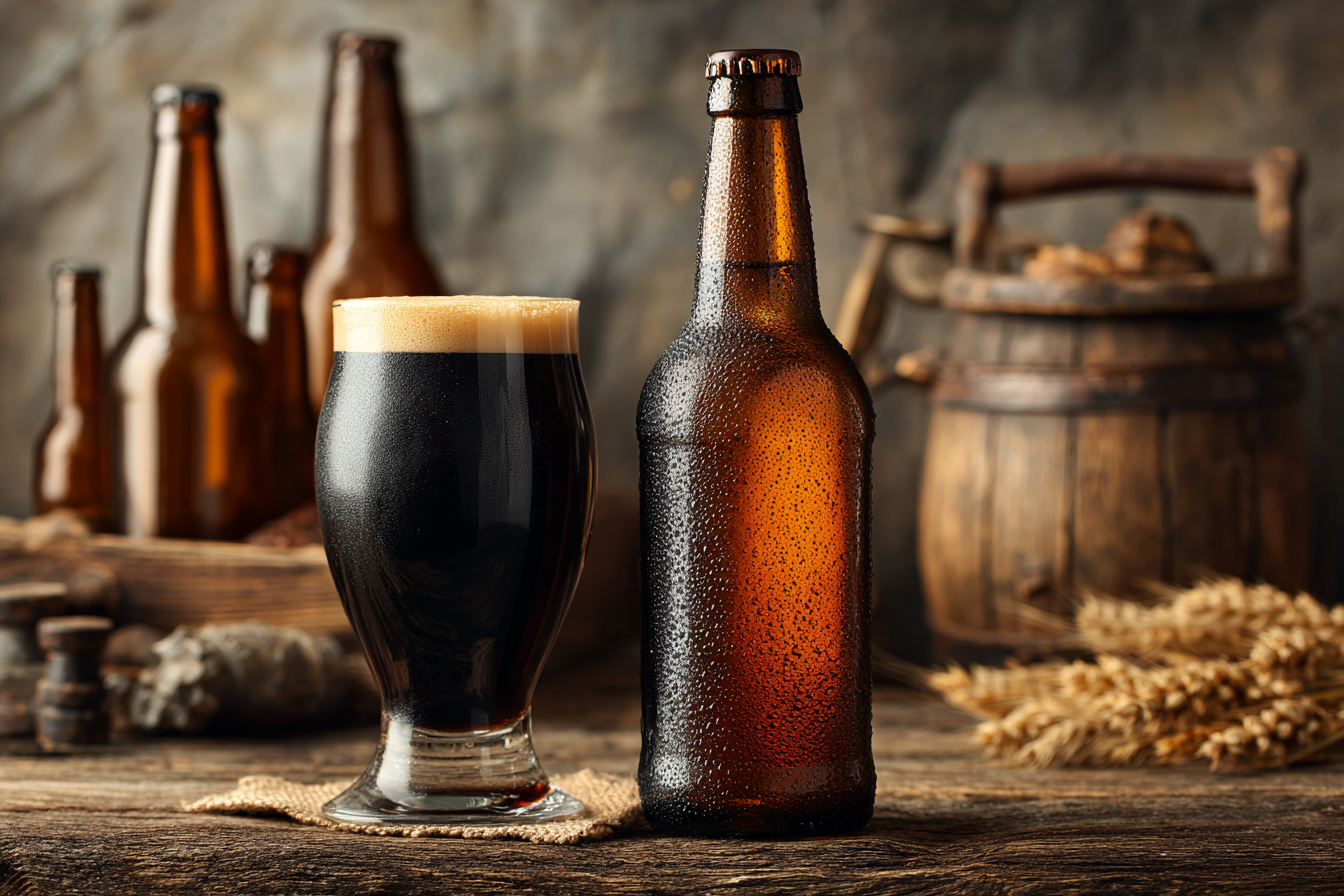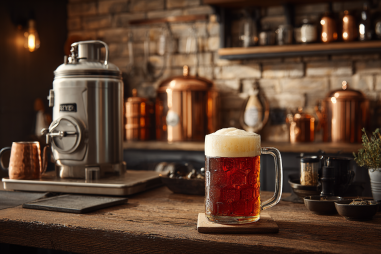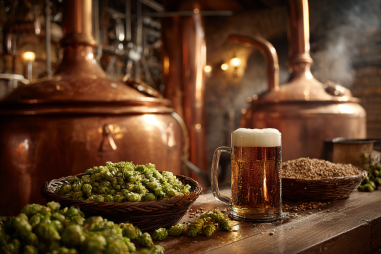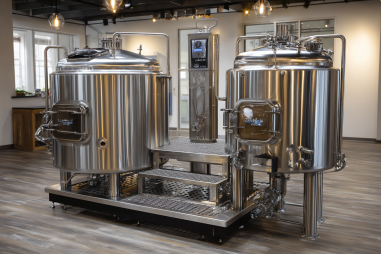Black IPA, with its intriguing mix of dark roasted malt flavors and the vibrant hop bitterness of traditional IPAs, has carved out a distinctive niche in the craft beer world. Known also as Cascadian Dark Ale, this beer style challenges conventional expectations by blending the boldness of porters and stouts with the bright, piney character of American hops. To truly appreciate Black IPA, it’s helpful to explore its rich history, the innovative brewers who crafted its identity, and how it continues to evolve and inspire beer enthusiasts today.
Early Inspirations and Predecessor Styles
The origins of Black IPA are deeply intertwined with the early days of craft brewing, especially as brewers began experimenting with hop-forward beers beyond the typical pale ales. Before Black IPA became recognized as its own style, brewers were already playing with ideas that combined dark maltiness with assertive hoppiness. Traditional English India Pale Ales (IPAs) themselves were fairly malt-forward with moderate bitterness, but the rapid evolution of American brewing introduced bolder hop profiles and darker malts.
Brewers initially looked to robust porters and stouts for inspiration—styles rich in roasted malt complexity that generally lacked hop intensity. There wasn’t an established style bridging these robust dark beers with the sharper, citrusy hop character of IPAs. Early experiments laying the groundwork for Black IPA emerged from this desire to fuse the best elements of both worlds into something new and exciting.
Key Milestones in Black IPA Development
The milestone moments in the history of Black IPA can be traced back to the late 1990s and early 2000s when American craft brewers began pushing boundaries. While there was some debate about what to call these hybrid brews, terms like “Black IPA,” “Cascadian Dark Ale,” and “India Black Ale” were tossed around. The Pacific Northwest, with its abundant hop farms and vibrant craft scene, became a key region for the style’s emergence.
One early and influential example was Rogue Ales’ Hazelnut Brown Nectar, released in the late 1990s, which melded nutty, dark malt flavors with a notable hop presence. Shortly after, breweries like Deschutes and 21st Amendment started producing beers that fit the Black IPA profile more clearly. By the mid-2000s, the style gained traction with a dedicated fan base and prominent brewers championing its boldness and complexity.
Influential Brewers and Breweries
Several pioneering craft brewers and breweries played a crucial role in popularizing Black IPA. Widely recognized names include:
- Stone Brewing Company: Their Sublimely Self-Righteous Ale is often cited as a flagship Black IPA that gained widespread acclaim and influence.
- Deschutes Brewery: Based in Oregon, Deschutes crafted versions that balanced dark malt backbone with juicy and piney hops, inspiring many West Coast brewers.
- 21st Amendment Brewery: Based in San Francisco, they contributed to the style’s visibility with their hop-forward and approachable versions.
- Firestone Walker Brewing Company: Known for innovation, they helped refine the style with their take that emphasized drinkability alongside intensity.
These breweries and many others embraced hops from local growers along with dark malts, creating distinct variations that reflected their regional terroirs and brewing philosophies.
Evolution of Recipes and Techniques
Black IPA recipes have evolved considerably since the style’s inception, with brewers experimenting with myriad malt combinations, hop schedules, and yeast strains. Early Black IPAs were often characterized by a strong roasted malt flavor that sometimes overshadowed the hops. As the style matured, brewers learned to balance the malt roastiness to complement, rather than compete with, the hop character.
Innovations in brewing techniques have been pivotal:
- Late-addition and dry hopping: These techniques emphasized fresh hop aroma and bitterness without adding excessive astringency or overshadowing malt flavors.
- Use of specialty roasted malts: Chocolates, browns, and black malts were carefully blended to achieve a complex dark color and flavor profile without excessive bitterness.
- Yeast selection: American ale yeast strains that promote fruity and clean fermentation profiles allowed the hops and malt to shine clearly.
These advancements helped refine Black IPA into a balanced brew that simultaneously delivers dark malt depth and vibrant hop punch.
Black IPA’s Place in the Modern Craft Beer Scene
Today, Black IPA holds a respected and admired spot within the broader craft beer culture. While it remains a niche style relative to broader categories like pale ales or IPAs, its loyal following appreciates the beer’s complexity and daring flavor profile. Many taprooms and craft beer festivals feature Black IPAs as a showcase of brewer creativity and hybridization.
The style has also inspired numerous offshoots and variations, including fruit-forward Black IPAs, higher-alcohol imperial versions, and even sour-infused takes. It stands as a testament to the craft beer movement’s spirit of experimentation and boundary-pushing.
Future Trends and Innovations
Looking ahead, Black IPA continues to evolve alongside shifting consumer preferences and brewing creativity. Some of the exciting trends include:
- Use of novel hops: Emerging hop varieties with unique flavor profiles like tropical fruits, herbs, and spice are being tested in Black IPA formulations.
- Incorporation of barrel-aging: Some brewers are aging Black IPAs in whiskey or wine barrels to add complex woody and vanilla notes.
- Collaboration brews: Cross-regional and international collaborations are producing new takes on Black IPA combining different brewing traditions and ingredients.
- Focus on sustainability: With craft brewers embracing greener practices, ingredient sourcing and brewing efficiency may shape future Black IPA recipes.
These trends point to a bright future for Black IPA as a style that will keep inspiring brewers and drinkers alike.
Appreciating the History Behind the Taste
Black IPA’s journey from experimental brew hybrid to beloved craft beer style underscores the passion and innovation at the heart of craft brewing. Understanding its history—the early inspirations, the fermenting creativity of brewers, and the continual refinement of recipes—deepens our appreciation for each glass. When enjoying a Black IPA, one savors not just its complex flavors, but the bold spirit of experimentation and the evolution of beer itself.







